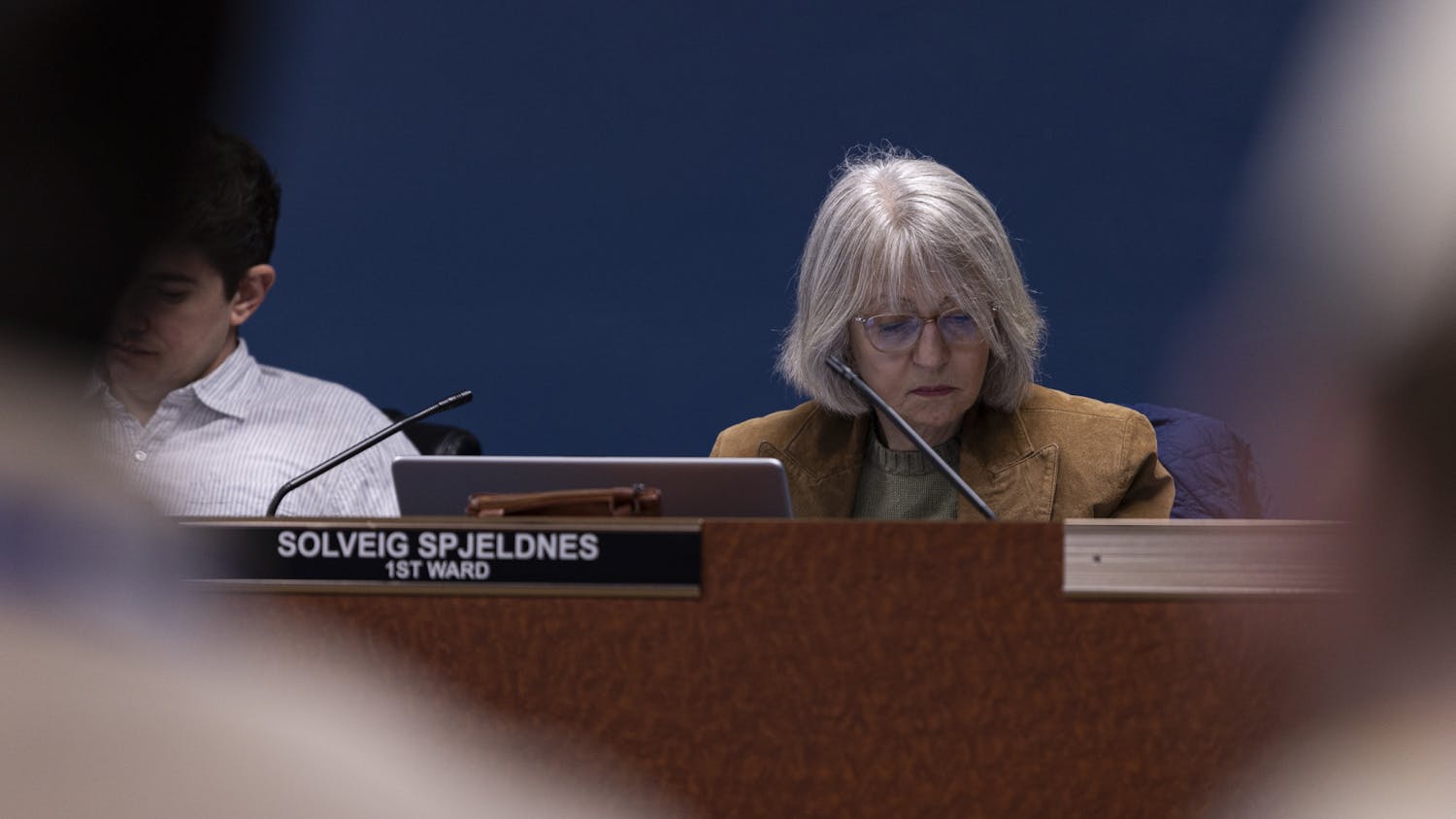OU also has four electric vehicles available for students and faculty to rent.
Owners of electric vehicles can now drive their cars into Ohio University’s campus without fear of losing a charge, thanks to the installation of 10 charging stations on campus.
The stations, which were completed in August, cost the university approximately $125,000 and are spread across OU’s campus in five locations: Baker Center, Stocker Center, Peden Stadium, Morton Hall and the Human Resources and Training Center, Marty Paulins, director of Transportation and Parking Services, said. Each station is equipped with two chargers and is available to OU students, faculty and staff.
Two of the charging stations — one at Baker and one at the Human Resources Center — will be used for a car-sharing program that allows students, faculty and staff to rent electric cars owned by OU.
Personal electric vehicles can be charged at the other three locations, as long as a permit is acquired from the university, Paulins said.
“We already have a couple registered on campus, and I don’t know if we have any from students yet, but we’ve had inquiries,” he said.
Those who wish to utilize the stations can apply for a permit through transportation services and must set up an account with ParkMobile, which is a smartphone app that will allow charging station users to enter the amount of time he or she wishes to park. The user will then be given a PIN from the app to enter into the keypad on the charger.
The only fee for using the chargers will be $0.75 per hour — the cost of the parking meters where the chargers are located.
Students and faculty can only let a vehicle sit at the charging station for five hours. Paulins said an electric vehicle owned by the university achieved a full charge in under five hours.
Transportation services has four electric vehicles in its motor flee — three Nissan Leafs, which are all-electric vehicles, and a Chevy Volt, which runs on an electric charge for up to 38 miles before transitioning to gasoline on longer trips.
One Leaf and the Volt are placed in the transportation services motor pool, which will make them available for students, faculty and staff to rent through the system Agile FleetCommander, if used for official university business or student organizational activities.
Grant Stover, president of the Sierra Student Coalition and former Post columnist, said he sees the charging program as a small step in the right direction.
“As of now, SSC has no plans to utilize them, but I wouldn’t be against using them,” Stover said. “I consider it a very minor step, but it sounds like the start of a good one. I think energy infrastructure and fossil fuel divestment should be the main concerns for the university.”
The use of electric vehicles and availability of the charging stations are a part of OU’s efforts to meet goals in its Climate Action Plan, aiming to reduce the university’s carbon footprint, Paulins said.
He added that he hopes the addition of the chargers will encourage more people to bring their electric vehicles to campus.
“I wouldn’t buy an electric car if I didn’t have the ability to charge it,” Paulins said. “It takes away that anxiety — that you can at least get your car charged when you’re here.”
@Alisa_Warren
aw120713@ohio.edu






